Cabernet Sauvignon was king when I first started drinking Chilean wines some 20 years ago. And not just Cabernet in general, but specifically bargain priced Cabernet. Most wine drinking folks I know rifled through bottles of $6 or so Cabernet Sauvignon looking for gems; we found quite a few. And for many people that’s the lingering impression of Chilean Wine. The trouble is it’s no longer a valid image. Sure you can still find a bargain and some of them are Cabernet Sauvignon, but there is so much more Chilean wine on U.S. shelves deserving your attention and your dollars that it would be a real shame to limit yourself. I knew this before I went to Chile last week. So one of my goals in visiting was to verify it and see what they had going on that might be less obvious from 5,000 miles away. So I’ve compiled a handful of strong impressions of Chilean Wines gleamed from the trenches.
- Argentina gets the attention but Chile makes some ass kicking Malbec: It’s Argentina’s signature grape so they should be at the forefront. In some ways they are, the general public thinks about Argentina first for Malbec. Some of them are terrific, but unfortunately way too many examples are made in an overtly fruit forward style with a lackluster body and no finish to speak of. I was a little surprised with the number of Malbecs I got to taste in Chile. While I knew it was there, its presence is larger than I would have guessed. More importantly the ones I tasted where almost all uniformly well made. By and large they were elegant, balanced and well proportioned. Often times they were made from old vine fruit. I hope we start seeing Chilean Malbec on our shelves in reasonable numbers soon.
- Tiers baby: I’ve often written about wineries like Rodney Strong in Sonoma County whose tiered approach to their portfolio is consumer friendly. This is true in a very large percentage of Chilean Wineries. They often have 3 or 4 tiers of wine. Often the entry-level wines retail for around $10 on our shelves and they have a top-level that might reach into the $30’s and $40’s, as well as occasionally higher. In between are wines in the teens and $20’s. What’s remarkable is that there is more often than not quality, value, and diversity to be had at each tier. In Chile wineries that produce what we view as very large quantities of wine often do so at a high level. One of the main reasons for this is simple: estate fruit. By owning the vineyards outright or having fruit under long-term contract they have a say in precisely how the vineyards are maintained. This can (and often does) lead to high quality in the bottle at each price point. The intent of a producer’s $8 Sauvignon Blanc and their $20 one are often quite different as are their appeals and projected end user. But what's important is getting value regardless of price; in Chile that is often the case.
- There are some delicious small production wines being made: Sure there are lots and lots of excellent Sauvignon Blancs coming from Chile and some tasty Pinot Noirs now too, but that’s not all. I had the opportunity to taste a delicious and marvelously dry Gewürztraminer made by Nimbus (part of the Santa Carolina Family of wines), as well as a lovely sparkling wine from Cono Sur to name a couple. Viognier is making some ripples in Chile too and hopefully before long we’ll see a greater number of them available in the US as well. I've mentioned a few whites but the same can be said for reds. More than one example of varietal Petit Verdot I had was lovely as were a couple of tastes of Carignan. In some cases these wines aren't on our shelves in the US yet, but they’re important to mention for the coming diversity and quality they represent.
- Blends will set Chile apart: Almost every winemaking culture has some blends. In places like Bordeaux they’re everything. In a lot of other places, well quite frankly they’re doing their best to mimic Bordeaux. Certainly Chile works to make great wine and learning lessons from places like Bordeaux or Napa to name two examples is part of the equation. But I also got the very strong sense that Chile is happy to be writing their own rule book when it comes to blends. Sure some of them contain the usual suspects of Bordeaux varietals. However grapes like Carménère that have been marginalized or fallen by the wayside in Bordeaux often steal the show in Chile. Additionally with red blends Syrah often makes a mark too as well as some others. Some of the most impressive wines from Chile I’ve tasted over the last 5 years have been blends. This remained constant on my trip last week where I tasted lots of delicious blends. It’s important to note that with blends like with varietal wines there are values at many price levels.
- Chilean Cabernet Sauvignon can still be a great value: While there are no longer boatloads of awesome deals on $6 Cabernet Sauvignon there are still many deals to be had. Cabernet Sauvignon from Chile when it’s grown in the right spot and treated properly in the winery can blow away a lot of countries on QPR. What I found on this trip is that the Cabernets in the $15-$25 range were particularly noteworthy in terms of value. These are balanced wines that are often perfect for everyday enjoyment as well as drinking over the next few years. At a higher cost there are some truly age-worthy wines. One example was the Casa Real Cabernet Sauvignon from Santa Rita. We tasted both the current release (2009) and a 15 year old bottle (1997). Jameson Fink, a fellow writer who was on the same trip wrote about this particular experience and it’s well worth a read.
- Diversity is King of Chile now: Everywhere we went there was something unique to taste. In some cases it was a Sparkling Rosé made from an almost lost grape. Sometimes it was a Moscato that stunned us all by how lovely and dry it was. On one occasion it was an Old Vine Sauvignon Gris. These are just a couple of examples. Chilean winemakers are experimenting in the vineyards with new farming techniques as well as plantings of new varietals or the reclamation of abandoned old vineyards. In the Winery they’re also experimenting with how they utilize oak, what they blend together and frankly just about every decision they make. What that means to us is we’re going to get to taste a wide swath of different wines from Chile.
In short I was pretty knocked out by what they have going on in Chile. I’ve really enjoyed drinking the wines from there for a long time now. But in 2012 instead of thinking of them for one thing, I think of Chile for an ever widening variety of different varietals, blends and more. Grab some Chilean wines and taste the quality, value and diversity I was lucky enough to witness firsthand.
 Hecht & Bannier was founded in 2002 by Gregory Hecht and Francois Bannier. They set themselves up in the style of traditional French Negociants with a goal of creating reference point releases in each region they produce wines from. The latest additions to their portfolio are a couple of wines from Provence. Here’s a look at them.
The Hecht & Bannier Côtes de Provence 2012 Rosé was produced from a blend of Grenache (45%), Cinsault (40%) and Syrah (15%). The grapes utilized were sourced at a variety of vineyards, some in the foothills of Montagne Sainte-Victorie and others high altitude vineyards of Haute-Provence. The fruit was picked overnight during cooler hours to assure the preservation of freshness. This wine has a suggested retail price of $18. The light salmon hue of this offering is both beautiful and immediately striking. Engaging floral characteristics emerge from the nose. The palate is fruity, spice, dry, lithe and absolutely lovely. Cherry, strawberry, bits of orange zest and white pepper are all in play from the first sip through the above average finish. This wine goes down easily and it also has the depth and complexity to keep things interesting. It’s really a super appealing wine that you’re going to want to buy a few bottles of as they disappear quick once they’re open.
Hecht & Bannier was founded in 2002 by Gregory Hecht and Francois Bannier. They set themselves up in the style of traditional French Negociants with a goal of creating reference point releases in each region they produce wines from. The latest additions to their portfolio are a couple of wines from Provence. Here’s a look at them.
The Hecht & Bannier Côtes de Provence 2012 Rosé was produced from a blend of Grenache (45%), Cinsault (40%) and Syrah (15%). The grapes utilized were sourced at a variety of vineyards, some in the foothills of Montagne Sainte-Victorie and others high altitude vineyards of Haute-Provence. The fruit was picked overnight during cooler hours to assure the preservation of freshness. This wine has a suggested retail price of $18. The light salmon hue of this offering is both beautiful and immediately striking. Engaging floral characteristics emerge from the nose. The palate is fruity, spice, dry, lithe and absolutely lovely. Cherry, strawberry, bits of orange zest and white pepper are all in play from the first sip through the above average finish. This wine goes down easily and it also has the depth and complexity to keep things interesting. It’s really a super appealing wine that you’re going to want to buy a few bottles of as they disappear quick once they’re open.
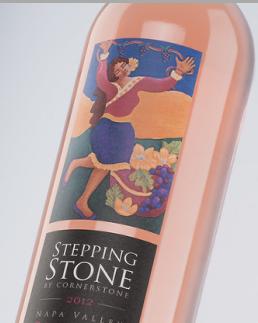 There are certain wines that hit my desk one vintage after another. It’s generally interesting and instructive to taste a new vintage of a wine to find out about if it’s as good, better or not as good as a previous example. We all have things we love a little more than most and for me excellent dry Rosé is near the top of my list. For several years now
There are certain wines that hit my desk one vintage after another. It’s generally interesting and instructive to taste a new vintage of a wine to find out about if it’s as good, better or not as good as a previous example. We all have things we love a little more than most and for me excellent dry Rosé is near the top of my list. For several years now  Common perception holds that Rosé’s don’t age well. Sometimes common beliefs are totally wrong and in other cases they become foregone conclusions for a good reason. In the case of Rosé’s longevity the truth is not 100% either of those things. Reality is that very few Rosés are built to age well. Some will hang around and be quite tasty for a couple of years but most go south after that. I’m the sort of person who is perfectly content drinking good, dry Rosé in the middle of winter, so I’m a fan. When the opportunity popped up to taste several vintages of Rosé from
Common perception holds that Rosé’s don’t age well. Sometimes common beliefs are totally wrong and in other cases they become foregone conclusions for a good reason. In the case of Rosé’s longevity the truth is not 100% either of those things. Reality is that very few Rosés are built to age well. Some will hang around and be quite tasty for a couple of years but most go south after that. I’m the sort of person who is perfectly content drinking good, dry Rosé in the middle of winter, so I’m a fan. When the opportunity popped up to taste several vintages of Rosé from 
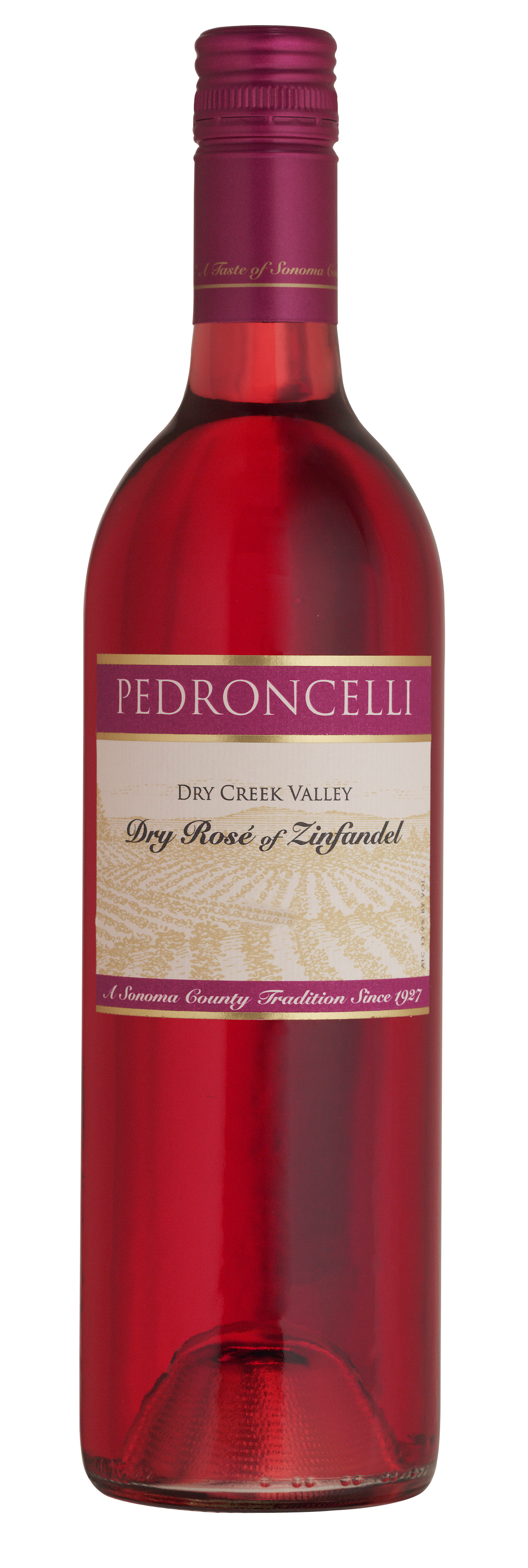 First up is the Pedroncelli 2011 Dry Rosé of Zinfandel. This Rosé is produced from fruit sourced in the winery’s home appellation of Dry Creek Valley. It’s a 100% varietal wine. Pedroncelli has been making Rosé since the 1950’s. Fermentation took place in temperature controlled stainless steel tanks. This wine saw no oak treatment. Just fewer than 1,000 cases were produced and it has a suggested retail price of $11. Aromas of strawberry and raspberry emerge from the welcoming nose of this Rosé. Cherry flavors dominate the palate along with hints of white pepper. Vanilla, and continuing juicy red fruit flavors continue on the crisp and refreshing finish. This a lovely dry Rosé of Zinfandel with some perceived sweetness from all the engaging fruit flavors. This is an excellent choice for a picnic.
First up is the Pedroncelli 2011 Dry Rosé of Zinfandel. This Rosé is produced from fruit sourced in the winery’s home appellation of Dry Creek Valley. It’s a 100% varietal wine. Pedroncelli has been making Rosé since the 1950’s. Fermentation took place in temperature controlled stainless steel tanks. This wine saw no oak treatment. Just fewer than 1,000 cases were produced and it has a suggested retail price of $11. Aromas of strawberry and raspberry emerge from the welcoming nose of this Rosé. Cherry flavors dominate the palate along with hints of white pepper. Vanilla, and continuing juicy red fruit flavors continue on the crisp and refreshing finish. This a lovely dry Rosé of Zinfandel with some perceived sweetness from all the engaging fruit flavors. This is an excellent choice for a picnic. I love Rosé. There’s something about this style of wine, when it’s well done that appeals to me on a deep level. Of course I consume more of it in warm weather months than in fall and winter. However I do find time and desire to drink it in the colder months, particularly if it’s a little bit bigger and bolder a style of Rosé. Today I’ll look at an example from Argentina that fits perfectly into the profile of the sort of Rosé I enjoy while I’m waiting for the weather to warm back up.
The Michael Torino 2011 Malbec Rosé was produced from fruit sourced in the Cafayate Valley of Argentina. All of the vineyards utilized sit between 3,000 and 5,000 feet above sea level. This selection is 100% Malbec. After a short period of skin contact this wine is fermented and vinified utilizing the same practices employed for their white wines. A short period of aging, roughly five months, takes place prior to release. This wine is widely available for right around $12.
I love Rosé. There’s something about this style of wine, when it’s well done that appeals to me on a deep level. Of course I consume more of it in warm weather months than in fall and winter. However I do find time and desire to drink it in the colder months, particularly if it’s a little bit bigger and bolder a style of Rosé. Today I’ll look at an example from Argentina that fits perfectly into the profile of the sort of Rosé I enjoy while I’m waiting for the weather to warm back up.
The Michael Torino 2011 Malbec Rosé was produced from fruit sourced in the Cafayate Valley of Argentina. All of the vineyards utilized sit between 3,000 and 5,000 feet above sea level. This selection is 100% Malbec. After a short period of skin contact this wine is fermented and vinified utilizing the same practices employed for their white wines. A short period of aging, roughly five months, takes place prior to release. This wine is widely available for right around $12.
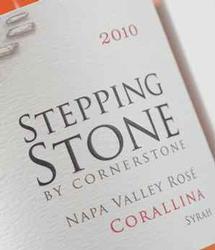 Cornerstone Cellars has been an impressive producer of excellent Napa Valley Cabernet Sauvignon for quite a few years now. Over the last few vintages they have also launched and expanded
Cornerstone Cellars has been an impressive producer of excellent Napa Valley Cabernet Sauvignon for quite a few years now. Over the last few vintages they have also launched and expanded  Rosé is one of the many reasons I look forward to warm weather. I’m glad to report that as a wine culture in this country we’ve gotten better in the last few years when it comes to embracing good, dry Rosé. Just about every wine making country has a Rosé tradition; this is particularly true in Europe. In Italy the tradition is Rosato and Napa Valley’s
Rosé is one of the many reasons I look forward to warm weather. I’m glad to report that as a wine culture in this country we’ve gotten better in the last few years when it comes to embracing good, dry Rosé. Just about every wine making country has a Rosé tradition; this is particularly true in Europe. In Italy the tradition is Rosato and Napa Valley’s  The El Coto de Rioja 2010 Rioja Rosado was produced using fruit sourced at estate vineyards. El Coto which was founded in 1975 has 500 hectares under vine. This offering is a 50/50 blend of Garancha and Tempranillo. This wine sits on the skin for 48 hours followed by cold fermentation. This offering has a suggested retail price of $10.
Aromas of strawberry, cherry and watermelon burst from the nose of this 2010 Rosé. The palate is exceptionally juicy and vibrant; it’s loaded with fresh red fruits. Strawberry, cherry, raspberry and watermelon are all present. Rhubarb and sweet black cherry flavors emerge on the finish as well as white pepper. This wine is incredibly refreshing and will pair well with an incredibly wide array of foods. It’s also delicious on its own.
The El Coto de Rioja 2010 Rioja Rosado was produced using fruit sourced at estate vineyards. El Coto which was founded in 1975 has 500 hectares under vine. This offering is a 50/50 blend of Garancha and Tempranillo. This wine sits on the skin for 48 hours followed by cold fermentation. This offering has a suggested retail price of $10.
Aromas of strawberry, cherry and watermelon burst from the nose of this 2010 Rosé. The palate is exceptionally juicy and vibrant; it’s loaded with fresh red fruits. Strawberry, cherry, raspberry and watermelon are all present. Rhubarb and sweet black cherry flavors emerge on the finish as well as white pepper. This wine is incredibly refreshing and will pair well with an incredibly wide array of foods. It’s also delicious on its own. With fall here and a chill in the air I start to think of Rosé a little differently. In the warmer months I think of how thirst quenching it can be; not to mention its crowd pleasing ability. This time of the year my thoughts veer towards the flexibility and adaptability that good Rosé shows off with a variety of foods. Thanksgiving, which is perhaps the most American of Holidays, is a perfect time to pull out Rosé. The typical Thanksgiving table is loaded with a variety of flavors, a challenge to pair wines with, but just the job Rosé was created to conquer. Today I’ll look at one from the Loire Valley that I strongly recommend considering for your holiday table.
Attitude by
With fall here and a chill in the air I start to think of Rosé a little differently. In the warmer months I think of how thirst quenching it can be; not to mention its crowd pleasing ability. This time of the year my thoughts veer towards the flexibility and adaptability that good Rosé shows off with a variety of foods. Thanksgiving, which is perhaps the most American of Holidays, is a perfect time to pull out Rosé. The typical Thanksgiving table is loaded with a variety of flavors, a challenge to pair wines with, but just the job Rosé was created to conquer. Today I’ll look at one from the Loire Valley that I strongly recommend considering for your holiday table.
Attitude by  The
The  September is almost here and with its arrival many folks will shift away from Rosé to other wines. But there’s no reason to do that. Well made, dry Rosé’s can be enjoyed all year; late summer and fall are as good a time as any. Today I’ll look at an Argentine example made from their signature varietal, Malbec. This offering is from Michael Torino. They have more than 1,500 acres under vines, most sitting at elevations of more than 5,500 feet above sea level.
The Michael Torino 2009 Malbec Rosé was produced from fruit sourced in the Cafayate Valley of Argentina. The grapes were harvested manually and after crushing there is some skin contact. Fermentation and vinification is handled in the same manner as their white wines. This selection has a suggested retail price of $11.99.
September is almost here and with its arrival many folks will shift away from Rosé to other wines. But there’s no reason to do that. Well made, dry Rosé’s can be enjoyed all year; late summer and fall are as good a time as any. Today I’ll look at an Argentine example made from their signature varietal, Malbec. This offering is from Michael Torino. They have more than 1,500 acres under vines, most sitting at elevations of more than 5,500 feet above sea level.
The Michael Torino 2009 Malbec Rosé was produced from fruit sourced in the Cafayate Valley of Argentina. The grapes were harvested manually and after crushing there is some skin contact. Fermentation and vinification is handled in the same manner as their white wines. This selection has a suggested retail price of $11.99. The Stepping Stone by Cornerstone 2009 Corallina Rosé was produced using fruit sourced at the Fore Family Vineyard in the Red Hills section of Lake County. This offering is a blend of Grenache (50%) and Syrah (50%). This wine underwent cold fermentation in stainless steel followed by oak aging in older puncheons. Just fewer than 200 cases of this offering were produced and it has a suggested retail price of $16.
The Stepping Stone by Cornerstone 2009 Corallina Rosé was produced using fruit sourced at the Fore Family Vineyard in the Red Hills section of Lake County. This offering is a blend of Grenache (50%) and Syrah (50%). This wine underwent cold fermentation in stainless steel followed by oak aging in older puncheons. Just fewer than 200 cases of this offering were produced and it has a suggested retail price of $16. The second wine is the Stepping Stone by Cornerstone 2008 Napa Valley Cabernet Sauvignon. It was produced using fruit sourced at vineyards in four distinct Napa regions; Oakville, Wooden Valley, Coombsville and Carneros. This selection is 100% Cabernet Sauvignon. 964 cases of this wine were bottled and it has a suggested retail price of $35.
The second wine is the Stepping Stone by Cornerstone 2008 Napa Valley Cabernet Sauvignon. It was produced using fruit sourced at vineyards in four distinct Napa regions; Oakville, Wooden Valley, Coombsville and Carneros. This selection is 100% Cabernet Sauvignon. 964 cases of this wine were bottled and it has a suggested retail price of $35. Hot and sometimes scorching weather as well as high humidity on the east coast the last few weeks has had me reaching for Rosé's to sample more often than usual.
Hot and sometimes scorching weather as well as high humidity on the east coast the last few weeks has had me reaching for Rosé's to sample more often than usual.  With the summer in full gear and 4th of July upon us, we’re right in the middle of Rosé season. These days there are excellent versions coming from most of the world’s major wine producing regions. That aside for a moment, there is something to be said for how seriously Rosé is treated in France. Their love affair with Rosé goes back generations. Thankfully we’re starting to catch up in the US. Today I’ll look at current release from Paul Jaboulet.
The
With the summer in full gear and 4th of July upon us, we’re right in the middle of Rosé season. These days there are excellent versions coming from most of the world’s major wine producing regions. That aside for a moment, there is something to be said for how seriously Rosé is treated in France. Their love affair with Rosé goes back generations. Thankfully we’re starting to catch up in the US. Today I’ll look at current release from Paul Jaboulet.
The 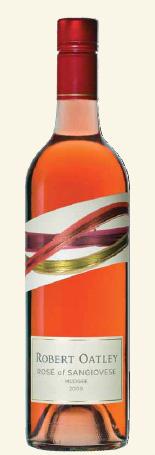 Today I’m going to take a look at three more wines that are perfectly suited for warm weather drinking. These selections are all from
Today I’m going to take a look at three more wines that are perfectly suited for warm weather drinking. These selections are all from 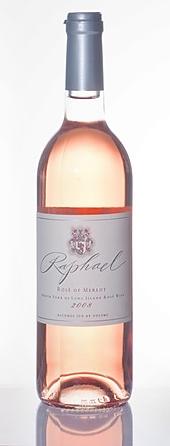 With Memorial Day weekend here, Rosé drinking season has officially begun in earnest. At the very least I know that’s true at my house. For me dry Rosé is one of the simple joys of warm weather. I took some time this week to try some Rosés from New York; Long Island to be more specific. Over the last few years there has been more and more acclaim for Long Island wines. The history of winemaking there dates to 1973. At that time there were 17 acres under vine, today there are 3,000. Total case production for Long Island is 500,000. Here are my thoughts about the Long Island Rosé’s I looked at this time out.
First up is a selection from
With Memorial Day weekend here, Rosé drinking season has officially begun in earnest. At the very least I know that’s true at my house. For me dry Rosé is one of the simple joys of warm weather. I took some time this week to try some Rosés from New York; Long Island to be more specific. Over the last few years there has been more and more acclaim for Long Island wines. The history of winemaking there dates to 1973. At that time there were 17 acres under vine, today there are 3,000. Total case production for Long Island is 500,000. Here are my thoughts about the Long Island Rosé’s I looked at this time out.
First up is a selection from  When speaking to friends, readers and other wine lovers in general it seems that by and large Sparkling Wine falls victim to a couple of preconceived notions. The most common is that often people aren’t very familiar with how many wine regions make Sparklers and instead think only of Champagne. Personally I find that just like any other category of wine each regions styles, productions methods and sense of place make for some interesting sipping. Of those who do venture to other areas of the world for Sparkling Wine, many limit themselves to special occasions for its enjoyment. In my opinion that’s a mistake. Sparkling Wine could conceivably have as much of a place on your table alongside a meal as it does next to your party hat on New Years Eve. Today I’m going to look at one from Italy that I just tasted and enjoyed.
The Lamberti Rosé Spumante is a non vintage sparkling wine. This selection was produced using a blend of Pinot Bianco (34%), Raboso (33%) and Pinot Nero (33%). This fruit was sourced from hillside vineyards throughout Trevisio in the Veneto. After pressing, the juice was immediately separated from the pomace to avoid adding more color than desired. The Charmat method was used in production. This is the same method used for Prosecco and Asti. The suggested retail price for this wine is $14.
When speaking to friends, readers and other wine lovers in general it seems that by and large Sparkling Wine falls victim to a couple of preconceived notions. The most common is that often people aren’t very familiar with how many wine regions make Sparklers and instead think only of Champagne. Personally I find that just like any other category of wine each regions styles, productions methods and sense of place make for some interesting sipping. Of those who do venture to other areas of the world for Sparkling Wine, many limit themselves to special occasions for its enjoyment. In my opinion that’s a mistake. Sparkling Wine could conceivably have as much of a place on your table alongside a meal as it does next to your party hat on New Years Eve. Today I’m going to look at one from Italy that I just tasted and enjoyed.
The Lamberti Rosé Spumante is a non vintage sparkling wine. This selection was produced using a blend of Pinot Bianco (34%), Raboso (33%) and Pinot Nero (33%). This fruit was sourced from hillside vineyards throughout Trevisio in the Veneto. After pressing, the juice was immediately separated from the pomace to avoid adding more color than desired. The Charmat method was used in production. This is the same method used for Prosecco and Asti. The suggested retail price for this wine is $14. With summer here a couple of things come to mind, Yankee Baseball and drinking lots of Rosé. The two happen to go well together. There are several Rosés which have become standards for me year after year. The Rosato from
With summer here a couple of things come to mind, Yankee Baseball and drinking lots of Rosé. The two happen to go well together. There are several Rosés which have become standards for me year after year. The Rosato from